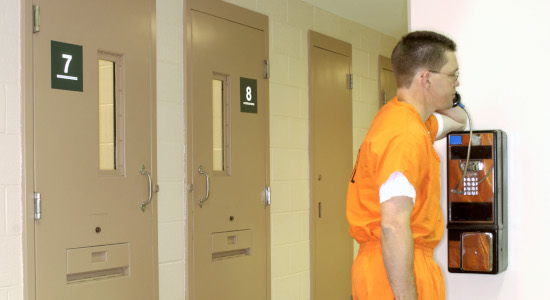
Nov. 22, 2019 – Brian Halverson was in jail when he admitted to a police officer, over the phone, that he stole and destroyed another inmate’s valuable documents. But the officer did not provide Miranda warnings before Halverson admitted the crime.
Facing criminal damage to property and misdemeanor theft charges, Halverson moved to suppress the admission on constitutional grounds. The Chippewa County Circuit Court granted the motion to suppress, but a state appeals court recently reversed.
In State v. Halverson, 2018AP858-CR (Nov. 13, 2019), a three-judge panel for the District III Court of Appeals ruled that Halverson was not “in custody” when questioned, for Miranda purposes, and thus the officer was not required to give Miranda warnings.
A prior Wisconsin Supreme Court decision, in 1999, created a “per se in custody rule” for jailed persons. That is, incarcerated persons are always considered in custody for Miranda purposes, and thus Miranda warnings are always required before interrogation.
But the Halverson appeals court ruled that it was bound by a 2012 U.S. Supreme Court decision that effectively overruled Wisconsin’s per se in custody rule.
In Custody?
Under Miranda v. Arizona, 384 U.S. 436 (1966), the U.S. Supreme Court held that police must inform suspects of certain constitutional rights, including the right to remain silent or have an attorney present, before they are interrogated in custody.
One of the key questions is whether someone is actually “in custody,” which would trigger the Miranda warning requirement before police questioning begins. Miranda warnings would not be required for someone who is not in custody and free to leave.
In State v. Armstrong, 223 Wis. 2d 331, 588 N.W.2d 606 (1999), the Wisconsin Supreme Court held that an incarcerated person is “per se” in custody for purposes of Miranda, which springs from the Fifth Amendment right against self-incrimination.
But in 2012, the U.S. Supreme Court decided Howes v. Fields, 565 U.S. 499 (2012). The state argued that Howes effectively overruled the “per se in custody rule,” and the Wisconsin Supreme Court had previously relied on federal case law to create the rule.
In Halverson, the three-judge panel agreed with the state. “We hold that Howes effectively overruled Armstrong,” wrote Wisconsin Appeals Court Judge Thomas Hruz.
“Howes now teaches that that the cases upon which Armstrong relied do not establish that a person who is incarcerated is always in custody for purposes of Miranda.”
“Instead, custody is determined by analyzing the totality of the circumstances surrounding the interrogation in question,” wrote Judge Hruz.
The panel rejected Halverson’s invitation to uphold the per se custody rule -- which would have required the officer to give Halverson Miranda warnings – in recognition of greater protection against self-incrimination afforded by the state constitution.
The panel noted that Wisconsin courts normally interpret the Wisconsin Constitution’s protection against self-incrimination (Art. I, s. 8) consistent with the U.S. Supreme Court’s interpretation of the Fifth Amendment right against self-incrimination.
Halverson Not “In Custody”
Analyzing the totality of the circumstances, the appeals court panel ruled that Halverson was not “in custody,” and Miranda warnings were not required.
The appeals court accepted, as evidence, testimony from a sheriff’s department corporal who worked in the jail. The corporal testified to the jail’s routine operating procedures for phone calls. The circuit court had declined to do so, concluding that there was no testimony to show the routine procedures were followed that day.
“While we acknowledge that no one else testified as to what specifically happened that day (other than Danielson, who was not physically present at the jail), the absence of such testimony in no way prohibits a court’s reliance on credible testimony regarding routine practices,” Judge Hruz wrote. Danielson was the officer on the phone.
The appeals court noted that an incarcerated person does not face the same circumstances as a civilian who is arrested and facing police questioning.
That is, an incarcerated person is already confined, and will continue to be confined after questioning ends – they may not feel similar pressure to answer in order to leave.
Halverson had voluntarily called the officer back, and the phone call only lasted three to four minutes. Halverson was in a locked phone room, but was not restrained. Nothing prevented Halverson from hanging up the phone if he did not wish to speak.
Based on the totality of circumstances, the appeals court concluded that “Halverson was not in custody for purposes of Miranda because a reasonable person in his position would have felt free to terminate the interrogation and end the phone call.”
